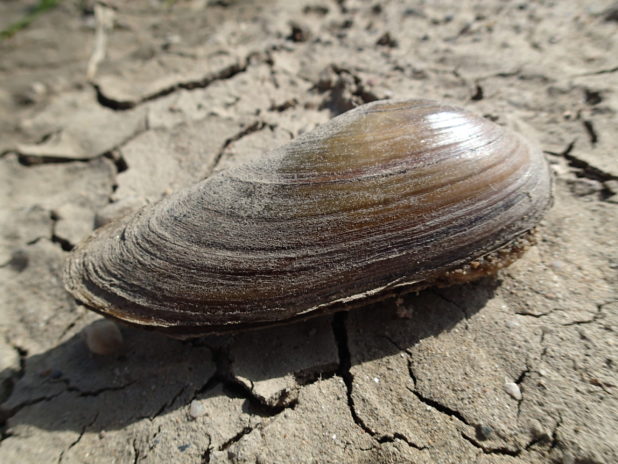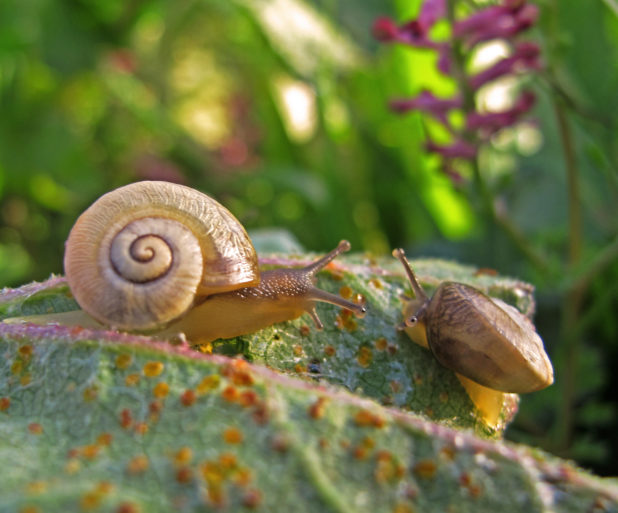A person can meet mollusks anywhere. These soft-bodied creatures are usually protected by a shell. This class includes snails, and mussels, and oysters, and squids, and octopuses. It is also noteworthy that mollusks are second in number after arthropods. Today there are approximately 75-100 thousand species of them in the world. Each mollusk has amazing features, and some facts about them can be completely shocking.
Scientists were able to establish that the shell of a bivalve mollusk has daily traces of growth in the form of lines. If you count them, you will be able to determine the number of days and months in a year. Such experiments have shown that there were more days in a year in the Paleozoic than now. This information was confirmed by both astronomers and geophysicists.
As scientists managed to find out, the oldest mollusk that a person caught lived for about 405 years and it was he who received the status of the oldest marine inhabitant.
1. Translated from Latin, “mollusk” means “soft”.
2. In Cuba, they managed to find an unusually interesting mollusk that emitted light when irritated. Spanish and Cuban explorers discovered it when they were working on the islands to study the underwater world of Macaronesia in 2000.
3. The largest clam was the one that weighed approximately 340 kilograms. He was caught in Japan in 1956.
4. “Infernal Vampire” – this is the only mollusk in the world that spends its own life at a depth of 400 to 1000 meters and in the presence of low oxygen content in the water.
5. Many shellfish produce pearls, but only bivalve pearls are considered valuable. Oyster pearls Pinctada mertensi and Pinctada margaritifera are the best.
6. There are shellfish on the east coast of the United States that have a unique appearance. Eastern emerald elision is incredibly similar to a green leaf that floats on water. In addition, this creature carries out the process of photosynthesis, just as plants do it.
7. The main type of food for molluscs is plankton, which they filter out in the water.
8. The age of each mollusk can be determined by the number of rings on the shell valve. Each ring may differ from the previous one due to nutrition, temperature, environmental conditions and the amount of oxygen in the water.
9. The noise of the sea in souvenir clams is the noise of the environment, which begins to resonate with the cavities of the shell. A similar effect occurs without the use of mollusk shell. It is enough just to put a mug or a bent palm to your ear.
10. Bivalve species of mollusks are able to move. Scallops, for example, with the rhythmic contraction of the valves and the ejection of a jet of water, are able to swim long distances. This is how they hide from starfish, which are considered their main enemies.
11. In the 40s of the XX century, predatory mollusks of rapana came from the Sea of Japan to the Black Sea on the bottoms of ships. From that moment on, they bred so much that they were able to displace mussels, oysters and other competitors.
12. On the territory of the Nazca desert, which was previously known as a forest, it was possible to find empty shells of mollusks.
13. In ancient times, purple and sea silk were created from shellfish.
14. By changing their own shells, mollusks can maintain body temperature, preventing it from rising to a lethal threshold of 38 degrees above zero. This also happens when the air is heated to 42 degrees.
15. Mollusks can actively move across the sea, as a result of which they secrete a lot of mucus, which becomes the main weapon against predators attacking them.
16. Ammonite mollusks, which have long since died out, were up to 2 meters in length. Until today, their shell is sometimes found by people in the sand and on the seabed.
17. Some molluscs, like slugs and snails, are involved in the pollination of vegetation.
18. The ring octopus clam, which lives near the Australian coast, is beautiful enough, but its bite can be deadly. The poison of such a creature poisons about 5-7 thousand people.

19. It is also interesting that octopuses are smart mollusks. They are able to distinguish the shapes of different geometric shapes, and also get used to people and sometimes become tame. This type of shellfish – very clean. They always take care of the cleanliness of their own home and wash off all the dirt with a jet of water they release. They pile the waste outside in a “pile”.
20. Some types of mollusks have small legs that they need to move around. In cephalopods, for example, the leg is located directly next to the tentacles. On the body of some mollusks there is also a shell, which serves as a defense of this creature from attack.
21. Despite everything, some mollusks are intelligent. For example, these include octopuses.
22. The ability to reproduce anywhere is the unique ability of shellfish. For them there is no difference: it is the earth’s surface or the water environment.
23. There are many shellfish in the world. Some of them are very tiny and parasitic. Others are huge and can be up to several meters long.
24. To protect themselves, many cephalopods begin to release an ink cloud, after which they swim away under its cover. The deep-sea mollusk “hellish vampire” resorts to another trick for its own salvation due to the darkness reigning in the aquatic environment. From the tips of its tentacles, this creature releases a bioluminescent slime that creates a sticky cloud of glowing blue balls. This light curtain is able to shock the predator, allowing the mollusk to quickly hide.
25. Mollusk Arctica islandica, which lives in the Atlantic and Arctic Ocean, can live up to 500 years. This is the longest living creature on the planet.
26. Clams are incredibly strong. If a person had such strength as they have, then people with a weight of 50 kg could easily lift a load with a mass of 0.5 tons vertically upwards.
27. Gastropods, in which the shell has a turbospiral shape, also have a liver in the last turns of the spiral.
28. On an industrial scale, the cultivation of shellfish was organized for the first time in Japan in 1915. The essence of this method was to place a particle in the shell, around which the mollusk could build up the mineral. This type of method was invented by Kokichi Mikimoto, who was later able to obtain a patent for his own invention.
29. Record holder among invertebrate molluscs – it’s a giant squid. Its body length can be 20 meters. Its eyes are up to 70 centimeters in diameter.
30. Octopus clams, also called octopuses, are the only creatures in the world that live in water and have a beak like a bird.
